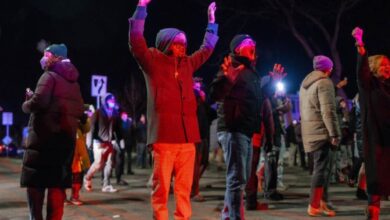What Can We Learn From the Recent Massacres Around the World?
LatinAmerican Post made an analysis of the details that are repeated in the people who have starred in some of the worst massacres in recent months, especially in the US. What health conditions do they have? What were their interests? Can they be considered terrorists?

Photo: Freepik
LatinAmerican Post | Christopher Ramírez Hernández
Listen to this article
Leer en español: ¿Qué podemos aprender de las recientes masacres alrededor del mundo?
The first weekend of July came with two massacres in the world. The first occurred in the city of Copenhagen, capital of Denmark, on July 3, when a 22-year-old lashed out at citizens visiting the Field's shopping center, south of the Danish capital. The incident left at least three dead people, of which two were minors, as well as four wounded who were quickly transferred to nearby health centers.
However, the horrific situation did not remain only in Denmark but moved thousands of kilometers to the west of that European country to return to one of the nations with the greatest sudden attacks in the world: the United States.
Once again, the North American giant was the territory of a new massacre, this time in Highland Park, an area near Chicago, Illinois, where a 22-year-old man, identified as Robert E. Crimo III, started shooting against the civilian population celebrating the Independence of the United States on July 4. According to local authorities, at least 7 people lost their lives in the middle of the attack, while another 39 were injured.
Thus, this new massacre joins the one that occurred on May 24 at the elementary school in Uvalde, Texas, where 19 children and two teachers died, and the one in Buffalo, New York, where on May 14 10 people were murdered in a mini-market.
You can also read: Can Mexico benefit from arms regulation in the United States?
Isolated Violence or Terrorism?
After the attack in Denmark, the head of the Copenhagen police, Soeren Thomassen, said at a press conference that, in the specific case of the perpetrator of the shooting in that city, there are no signs or evidence that would even suggest that his actions are related with a terrorist attack, because at all times he acted alone and without the clear intention of choosing the victims of his attack.
“It is important for me to emphasize that in the work we have been doing throughout the night there is nothing to indicate that the suspect we detained has been with others or has been helped by others (…) We believe that the victims are random. That (the attacker) was not motivated by the gender (of the victims) or anything else," Thomassen explained.
According to the UN General Assembly, terrorism is a series of "criminal acts designed or planned to cause a state of terror in the general population, in a group of people or in specific people that are unjustifiable in all the circumstances, whatever the political, philosophical, ideological, racial, ethnic, religious or any other considerations that are asserted to justify them”.
In short, for the United Nations Organization, the use of violence as an excuse to terrorize a distinctive group in society can be considered terrorism; that in the case of the latest massacres can be made visible in at least one case: that of Chicago, since according to the authorities it was inspired by racial hatred. For this reason, Payton Gendron, 18, was charged with the crime of domestic terrorism in June.
The rest of the massacres have been considered isolated shootings, since the attackers did not have, directly, a political, social, or cultural relationship with the victims, or with the area in which they were carried out.
Psychological Problems
In this way, another pattern that is present in the most recent shootings has as its main detail the mental health of the perpetrators and, the most horrifying, their age.
By June of this year, and according to the official records of the United States, of the nine shootings with the highest number of deaths recorded since 2018 in that country, six were planned and executed by people aged less than or equal to 21 years; and all presented serious psychological crises that led to their violent, psychopathic and asocial behavior.
“These are young people who feel like losers and have a very strong drive to show everyone that they do matter. In the case of the Buffalo shooter, it was about impressing this community of racists that he had cultivated online . In the case of the boy from Uvalde, it was a matter of going back to the place where he felt that he was not respected to act with violence, ”said Frank T. McAndrew, professor of psychology at Knox University, in conversation with The New York Times.
In that sense, problems very typical of American society such as school bullying, both face-to-face and online; the culture of "legal violence" reflected in the normal use of weapons in environments such as video games or the cinema, and the laxity of the laws to acquire high-impact weapons from the age of 18 have led to the creation of more and more behaviors violence among adolescents and young people, who are mostly men.
“I Can Do Better”
Lastly, and closely related to psychological problems, is the need for revenge and self-improvement as a pattern among the people who commit these massacres. Globalized access to technology makes young people fall into social practices in which violence becomes the best way to attract attention.
“The curiosity is encouraged, the curiosity to be part of something that is outside the standards defined by society (…) All this is going to stimulate and motivate these people who desperately seek to stand out, who need attention from others ”, was the conclusion reached by Ana Isabel Beltrán-Velasco, professor of psychology and neuropsychology at Nebrija University, in Madrid, Spain, according to an article of her authorship published in The Conversation.




